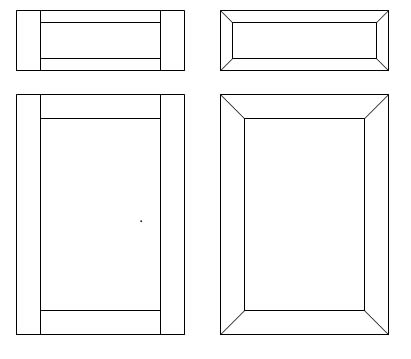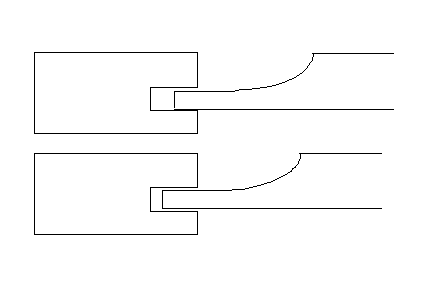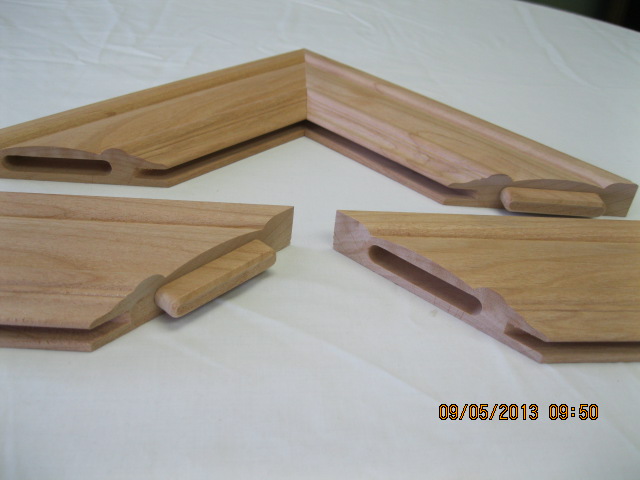What is a Mitered Cabinet Door and how are they made?
Jul 2nd 2015
As I explained in the post “What is a Cope and Stick Cabinet Door and How are They Made?”, there are two major categories of Cabinet Doors. These are Solid Slab, or plank doors, and 5-piece doors.
The Slab door is simply several boards edge-glued and trimmed to the desired size.
5-piece cabinet doors are divided into two design categories; Cope and Stick and Mitered.
The 5-piece door is more complex but more reliable and more pleasing in appearance. This is especially true with Mitered doors which offer more moulding choices than Cope and Stick designs.
This post is focused on the Mitered, 5-piece cabinet door.
The drawing below shows a Cope and Stick Cabinet Door and Drawer Front on the left and a Mitered Cabinet Door and Drawer Front on the right. The differences are in the corners and the method of joining the parts of the frame.
The Mitered door has the frame joined at a 45-degree angle while the Cope and Stick door frame is connected at a 90-degree angle.

The five pieces in a Mitered door are the four parts of the frame, called Stiles and Rails. The Stiles are the vertical pieces, or sides of the frame and the Rails are the top and bottom pieces. The fifth piece of the 5-piece door is the panel, which the frame surrounds.
The reason the 5-piece door is more reliable than the Slab door is in the way each design responds to changes in relative humidity.
All woods will expand as humidity increases, and as humidity decreases they will contract. An average width Slab Cabinet Door, being between 14 and 20 inches wide, will expand and contract with humidity cycles over the year by as much as three-sixteenths-inches. Some wood types react more and some less, but three-sixteenths-inches is typical for a Slab door.
While this may not sound like much, it is enough to prevent butt-door pairs from closing during high humidity times and cause a gap between the butt doors of one-half inch in low humidity times.
Here is where the 5-piece design comes to the rescue.
In the 5-piece door the panel is allowed to float within the frame, so during panel expansion the panel edges simply move deeper into the Stiles and during contraction the panel slightly pulls back. The Mitered door is designed with a groove for in the stiles so panel movement is accepted without being noticed.

The top drawing shows an end-view of the stile with a contracted wood (low humidity) panel, while the drawing below shows a humidity-expanded panel. Notice that the panel still reacts dimensionally with changes in humidity but in the 5-piece door this panel movement is absorbed by the groove in the stiles. This design keeps the overall width of the door constant as the relative humidity fluctuates.
With Mitered doors there are several joining methods used across the industry. The newer methods using computerized machinery are more reliable and far more accurate. The blind mortise and tenon method produces an invisible joint that is both stronger and more resistant moisture than earlier joining methods. An example of this blind joint is pictured below.

Blind Mortise and Tenon Mitered Cabinet Door Joint
Shop For: Mitered Cabinet Doors

